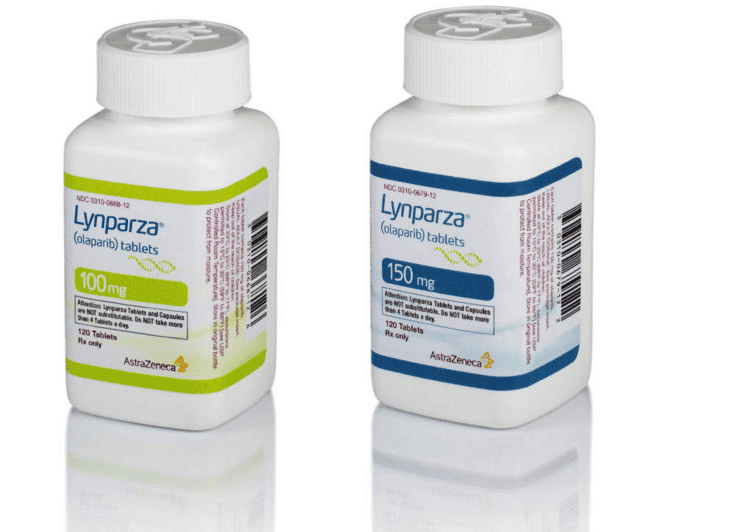
AstraZeneca and its marketing partner MSD are recording another success for their targeted cancer treatment Lynparza (olaparib) in England.
The Parp-inhibitor drug is now recommended by NICE for use on the Cancer Drugs Fund (CDF) as an option for the maintenance treatment of BRCA mutation-positive, advanced (FIGO stages 3 and 4) high-grade epithelial ovarian, fallopian tube or primary peritoneal cancer that has responded to first-line platinum-based chemotherapy in adults.
The decision is based on the results of the SOLO-1 clinical trial, which showed the drug can extend progression-free survival for these women by around three years.
However the trial hasn’t yet shown increased overall survival, hence why Lynparza is being funded via the Cancer Drugs Fund, reserved for treatments where there remain uncertainties about cost or clinical effectiveness.
The decision is a very rapid one from NICE – it was only last month that Lynparza gained its European marketing authorisation in this setting – reflecting a wider shift in how England’s cost effectiveness watchdog works with the industry.
Integral to these rapid deals are confidential discounts to the price, something which NHS England worked closely on with NICE and the companies. It says it is pleased to have arrived at a deal which has “clear benefits for those patients who would benefit, as well as industry and taxpayers.”
Around 22% of ovarian cancer patients carry a BRCA mutation, which must be identified via a companion diagnostic test.
“We have worked collaboratively with NICE and NHS England and are incredibly proud to have secured today’s decision,” Mohit Manrao, Business Unit Director, Oncology at AstraZeneca UK.
Highlighting the homegrown nature of the Lynparza success story, Manrao said the drug was discovered and developed in the UK, and is also manufactured and packaged in the north of England to supply patients worldwide.
“We hope that this product of British science will help to improve the survival outcomes for these patients.”
The news is just another feather in the cap for Lynparza, which is building up an unstoppable lead in the Parp-inhibitor class, which is now also licensed for use in breast cancer, and has new indications in pancreatic cancer and prostate cancer in its sights.
Yesterday the company’s Q2 results showed the drug earned revenues of $283m, up 89% compared to the same period last year.
AstraZeneca’s satisfaction with the NICE decision on Lynparza is in stark contrast to one announced just a few weeks ago, however. NICE rejected the use of targeted lung cancer drug Tagrisso in front line use, citing as-yet uncertain PFS and OS data, but also ruled it ineligible for use on the CDF.
This prompted AstraZeneca chief executive Pascal Soriot to call for a ‘comprehensive review of how NICE values innovative medicines.’ NICE has this week launched such a review, although a reconsideration of its core QALY threshold has been ruled out.




